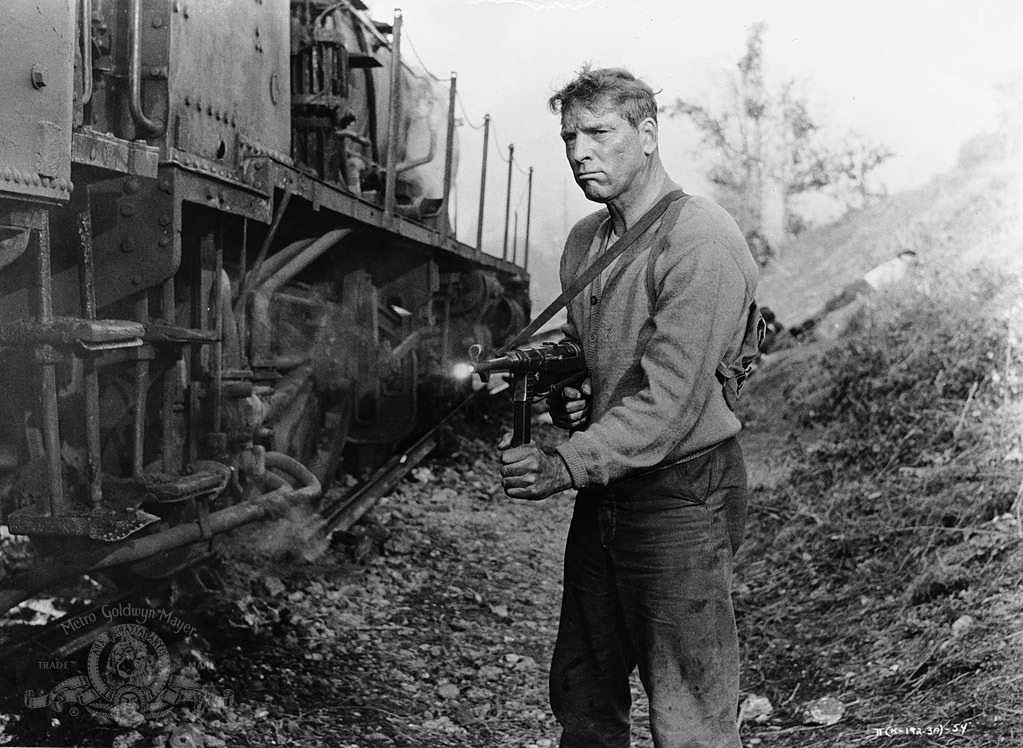The Train (1964)

“The Train,” directed by John Frankenheimer and released in 1964, stands as a gripping example of the war drama genre, combining suspenseful storytelling with intense action sequences. Set against the backdrop of World War II, the film offers a compelling narrative about the resistance efforts against the Nazi occupation of France and the struggle to prevent the theft of invaluable art. With its taut direction, powerful performances, and meticulous attention to historical detail, “The Train” remains a classic in the war film genre.
“The Train” is set during the final days of World War II and follows the story of a German Colonel, von Waldheim (played by Paul Scofield), who is determined to transport a collection of stolen French art treasures to Germany. These priceless works of art, which have been looted from French museums and private collections, are to be shipped by train in a bid to preserve them for the Third Reich.
In response to this dire threat, the French resistance, led by Labiche (played by Burt Lancaster), devises a daring plan to prevent the train from reaching its destination. Labiche, a former railroad worker turned resistance fighter, is tasked with sabotaging the train and preventing the Nazis from escaping with the stolen art. The film portrays his efforts and the complexities of the mission as the resistance fighters face numerous obstacles, both from the German forces and from internal conflicts.

As Labiche and his team work to thwart the German plans, the stakes rise and tensions mount, leading to a series of high-octane sequences involving sabotage, evasion, and direct confrontation. The narrative builds towards a climactic confrontation as the resistance members struggle to outwit their enemies and prevent the art from leaving the country.
Burt Lancaster delivers a powerful performance as Labiche, embodying the role of a resourceful and determined resistance leader. Lancaster’s portrayal captures Labiche’s strategic acumen and personal commitment to the cause, providing a strong central figure around whom the film’s tension revolves. His physical presence and charisma are central to the film’s impact, making his character both compelling and memorable.
Paul Scofield’s role as Colonel von Waldheim is equally impactful. Scofield’s performance as the cold and calculating Nazi officer provides a formidable antagonist to Labiche and the resistance. His portrayal of von Waldheim is marked by a blend of arrogance and ruthlessness, creating a character whose determination to secure the stolen art adds a layer of menace to the narrative.

The supporting cast, including Jeanne Moreau as the enigmatic resistance member Christine, adds depth to the film’s character dynamics. Moreau’s performance complements Lancaster’s and Scofield’s, bringing nuance and complexity to the interactions between the resistance and the German forces.
“The Train” explores themes of patriotism, sacrifice, and the moral complexities of war. The film’s narrative highlights the struggle of ordinary people fighting against an oppressive regime, showcasing the lengths to which individuals will go to protect their cultural heritage and their country. The resistance’s mission to prevent the theft of the art serves as a metaphor for the broader fight against tyranny and the preservation of values amidst conflict.
The storytelling is characterized by its suspenseful pacing and strategic plot developments. The film effectively blends action with drama, creating a narrative that is both thrilling and emotionally engaging. The mission’s complexity and the characters’ personal stakes drive the plot forward, maintaining a high level of tension throughout.

The film’s visual style and cinematography are integral to its success. The depiction of the wartime setting, including the French countryside and the train’s interior, is rendered with a keen attention to detail. The use of realistic locations and set designs enhances the film’s authenticity and immerses the audience in the period setting.
The action sequences, particularly those involving the sabotage of the train, are filmed with a dynamic and engaging style. The cinematography captures the intensity of the confrontations and the intricacies of the sabotage efforts, contributing to the film’s suspense and excitement.
“The Train” excels in its action sequences and suspenseful moments. The film’s depiction of sabotage, train heists, and direct confrontations is executed with a high degree of skill, creating a sense of urgency and danger. The interplay between action and strategy adds depth to the film’s narrative, making it a standout example of the war thriller genre.

The suspense is heightened by the film’s focus on the resistance’s efforts to outwit the German forces and the ticking clock of the approaching train. The narrative’s build-up and the unfolding of the sabotage plan create a gripping and immersive experience, keeping the audience engaged until the final moments.
Upon its release, “The Train” received positive reviews for its engaging story, strong performances, and effective direction. The film’s blend of action and drama, along with its historical context and attention to detail, garnered acclaim from critics and audiences alike.
“The Train” has since become a classic in the war film genre, praised for its ability to combine thrilling action with a meaningful narrative. Its impact lies in its portrayal of resistance efforts and its exploration of themes related to wartime sacrifice and heroism.
“The Train” (1964) is a masterful war drama that combines suspense, action, and historical detail to create a compelling cinematic experience. Directed by John Frankenheimer and featuring strong performances by Burt Lancaster and Paul Scofield, the film offers a gripping narrative about the fight against Nazi forces and the protection of cultural heritage. With its dynamic storytelling, effective action sequences, and exploration of complex themes, “The Train” stands out as a powerful and memorable entry in the war film genre.









